Red Light Therapy Sauna Benefits: Transform Your Health in 2025

Red light therapy saunas are changing how people approach wellness in 2025. This treatment pairs heat with specific red light waves (630-670nm and 810-880nm) that reach deep into your body’s tissues.
Key Takeaways
- Dual Power: Combines heat and red/near-infrared light (630–670nm, 810–880nm) for deeper tissue benefits.
- Proven Results: Increases ATP by up to 200% and collagen by 31%—supporting healing, anti-aging, and recovery.
- Whole-Body Benefits: Improves skin, reduces chronic pain, enhances hormones, and boosts sleep and immunity.
- Fast Results: Most users notice improvements within 8–12 sessions.
- Safe & Non-Invasive: Few side effects when used correctly—suitable for long-term wellness support.
What makes red light therapy different? It doesn’t just cover up health problems—it helps your body fix them from the inside out. Studies in major science journals show it works for better skin, less pain, and faster healing. Tests found it can boost your cells’ energy by up to 200%.
Let’s look at the proven benefits that make red light therapy saunas worth trying for anyone who wants better health without drugs or surgery.
Table of Contents
MEDICAL DISCLAIMER: The information provided in this article is for educational purposes only and is not intended as medical advice. Always consult with a qualified healthcare professional before starting any new health regimen, including the use of saunas.
What Is Red Light Therapy and How Does It Work in Saunas?
Red light therapy saunas harness the power of specific light wavelengths to enhance cellular function throughout your body. The technology uses specialized LEDs that emit red light (630-670nm) and near-infrared light (810-880nm) – wavelengths proven to have therapeutic effects.
This treatment works through a process called photobiomodulation. Each wavelength penetrates to different depths in your body – red light reaches about 8-10mm beneath the skin, while near-infrared light can penetrate several centimeters into muscle, bone, and even organs.
When these light photons reach your cells, they’re absorbed by chromophores within your mitochondria (your cellular energy factories). This interaction stimulates the production of adenosine triphosphate (ATP), the primary energy currency that powers all cellular functions.
A study published in the Journal of Photochemistry and Photobiology found that red light therapy increased cellular ATP production by up to 200% in treated tissues. 1
The result? Enhanced cellular performance throughout your body – cells repair faster, function more efficiently, and generate more energy, creating a cascade of beneficial effects.
Red Light Therapy vs. Infrared vs. Traditional Saunas: What’s the Difference?
Before diving into specific benefits, it helps to understand what makes red light therapy saunas unique compared to other options you might encounter:
The synergistic effects of combining heat therapy with red light create a powerful healing environment. Heat increases blood flow and opens pores, while red light energizes cells and triggers repair mechanisms at the cellular level – a combination not available in traditional or standard infrared saunas.
Top Skin Benefits of Red Light Therapy
Want younger-looking, healthier skin? Red light therapy saunas might be your new best friend.
Collagen Production Boost
Red light therapy significantly increases collagen production in the skin. Collagen is the protein responsible for skin structure, firmness, and elasticity.
A controlled trial published in Photomedicine and Laser Surgery found that red light therapy increased collagen density by up to 31% in participants after just 12 weeks of treatment. 2
Another study in the Journal of the American Academy of Dermatology showed that low-level red and infrared light increased the expression of collagen, elastin, and hyaluronic acid in human skin samples. 3
What does this mean for your skin? Fewer wrinkles, improved elasticity, and a more youthful appearance.
Treatment for Skin Conditions
Red light therapy treats various skin conditions:
- Acne: Reduces inflammation and kills bacteria
- Rosacea: Decreases redness and flushing
- Psoriasis: Slows excessive skin cell growth
- Eczema: Calms inflammation and itching
A study published in the Indian Dermatology Online Journal found that red light therapy showed “clinically and statistically significant clearance of inflammatory acne for up to 20 weeks after multiple treatments”. 4
Most people notice skin improvements after 8-12 sessions, with optimal results after 20-30 sessions. For maintenance, experts recommend 1-2 sessions weekly.

Pain Relief and Recovery Benefits of Red Light Therapy
If you suffer from chronic pain or exercise regularly, red light therapy saunas offer significant benefits.
Anti-inflammatory Effects on Chronic Conditions
Red light therapy reduces inflammation at the cellular level by:
- Decreasing pro-inflammatory cytokines
- Increasing anti-inflammatory cytokines
- Improving cellular metabolism
- Enhancing blood flow to damaged tissues
A clinical study published in PubMed found that patients with degenerative osteoarthritis who received red light therapy experienced “pain reduction of more than 50%” compared to the placebo group. 5
Muscle Recovery Acceleration
For athletes and fitness enthusiasts, red light therapy speeds recovery by:
- Reducing exercise-induced muscle damage
- Decreasing delayed-onset muscle soreness (DOMS)
- Increasing muscle growth and performance
A 2016 review study published in the Journal of Biophotonics found that athletes who received red light therapy showed significantly faster recovery times and enhanced performance compared to control groups. 6
Post-Surgery Recovery Enhancement
Red light therapy can dramatically speed healing after surgery:
- Reduces swelling and bruising
- Decreases scarring
- Accelerates tissue repair
- Lowers pain levels
A NASA-funded study found that red light therapy treatments “produced more than a 40 percent greater improvement in musculoskeletal injuries and a 50 percent faster healing time for lacerations, compared to control groups.
Hormone Optimization and Reproductive Health Benefits of Red Light Therapy
One of the most powerful benefits of red light therapy is its effect on hormone balance.
Potential Hormonal Benefits
Early research suggests red light therapy may support hormonal health, particularly in men:
- May support Leydig cell function in the testes
- Could improve blood circulation to hormone-producing tissues
- Might help reduce oxidative stress that interferes with hormone production
Some research on red light therapy for testosterone production suggests it could enhance cellular energy in hormone-producing cells. A small clinical study showed participants receiving light therapy reported improved sexual satisfaction after treatment.
While promising, more comprehensive clinical research is needed to fully establish red light therapy’s effects on hormone levels and production.
Thyroid Function Support
The thyroid gland responds particularly well to red light therapy.
A study published in Lasers in Medical Science found that “hypothyroid patients who received 10 sessions of red light therapy were able to reduce their medication dosage, with 47% being able to stop medication completely during the 9-month follow-up period”. 7
Weight Loss and Metabolic Benefits of Red Light Therapy
While not a replacement for healthy eating and exercise, red light therapy can support weight management efforts.
Increased Cellular Metabolism
Red light therapy boosts cellular metabolism by:
- Enhancing mitochondrial function
- Increasing ATP production
- Improving glucose uptake
- Enhancing fat cell metabolism
A study published in Lasers in Surgery and Medicine found that red light therapy increased metabolism in fat cells and triggered the formation of small pores in fat cell membranes, allowing stored fat to escape. 8
Fat Cell Function Modification
Red light therapy affects fat cells (adipocytes) in several ways:
- Creates temporary pores in fat cells
- Allows fatty contents to leak out
- Stimulates fat cells to release stored fat
- Improves fat-burning hormones
While some clinical studies suggest potential benefits for body contouring using various light therapies, evidence specifically for red light therapy saunas and significant weight loss remains limited.
WebMD notes that while some light therapies may temporarily change body shape, they don’t cause actual weight loss.
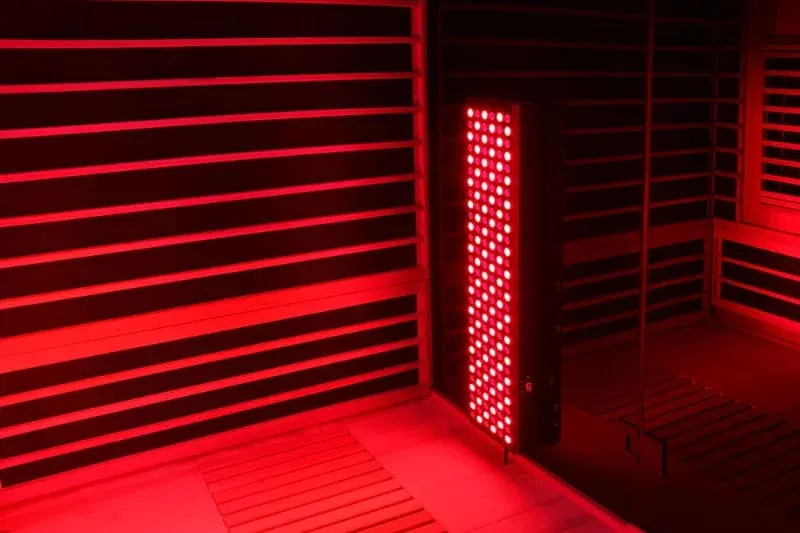
Mental Health and Sleep Improvements
Red light therapy offers surprising benefits for mental health and sleep quality.
Effects on Serotonin and Melatonin & Sleep Quality
Red light therapy positively affects both sleep-related hormones and overall sleep quality:
- Serotonin: Increases this “feel-good” chemical that helps regulate mood
- Dopamine: Balances this reward and pleasure hormone
- Melatonin: Boosts natural production of this sleep hormone
A 2012 study published in the Journal of Athletic Training by the China Institute of Sport Science found that athletes receiving red light therapy had significantly higher melatonin levels and improved sleep quality. 9
The researchers documented a strong correlation between increased melatonin and improved sleep scores, with participants experiencing:
- 54% improvement in sleep quality
- Faster time falling asleep
- Longer periods of uninterrupted sleep
- Deeper sleep cycles
- More refreshed waking state
Stress Reduction Benefits
Red light therapy may help lower stress levels through several biological pathways:
- Cortisol Regulation: Sessions may help normalize cortisol (stress hormone) levels
- Parasympathetic Activation: Supports your “rest and digest” nervous system
- Oxidative Stress Reduction: Decreases cellular damage from stress
While research specifically on red light therapy and cortisol reduction is still developing, a study published in the International Journal of Endocrinology examined how different light wavelengths affect hormone levels, including cortisol. 10
Many users report feeling relaxed during and after sessions. This makes red light therapy a potential complement to other stress management practices, though more clinical research is needed to confirm these effects.
Immune System and Overall Health Benefits of Red Light Therapy
Perhaps the most valuable benefit of red light therapy is its effect on immune function and overall health.
Immune Cell Function Optimization
Red light therapy enhances immune function through several mechanisms:
- White Blood Cell Production: Increases quantity and activity
- Macrophage Function: Improves pathogen removal
- Cytokine Regulation: Balances immune signaling
- Lymphatic Flow: Enhances removal of waste
A 2024 study published in Frontiers in Immunology demonstrated that red light therapy modulated the activity of immune cells, including macrophages and neutrophils, enhancing the immune system’s ability to recognize and eliminate pathogens. 11
Enhanced Circulation and Cardiovascular Health
Red light therapy improves circulation by:
- Stimulating nitric oxide production (blood vessel dilator)
- Improving red blood cell function
- Enhancing lymphatic flow
- Strengthening capillary networks
A study from the Medical College of Wisconsin found that red light therapy (670 nm) boosts blood flow by helping the body release nitric oxide, suggesting it may be a safe, non-invasive way to help people with circulation problems. 12
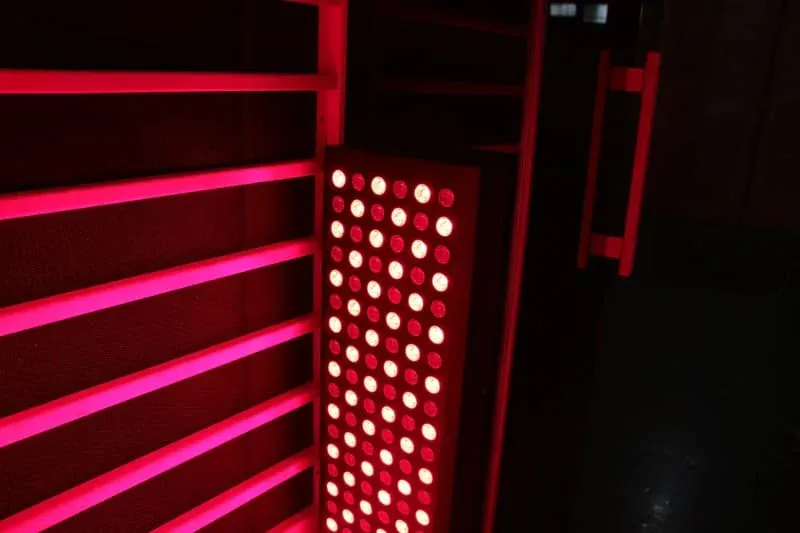
How to Incorporate Red Light Therapy Saunas Into Your Wellness Routine
Ready to try red light therapy? Here’s how to get started.
Professional vs. At-Home Options
Professional Red Light Saunas:
- Higher power output (50-100 mW/cm²)
- Full-body coverage
- Combined heat and light therapy
- Expert guidance
- Cost: $50-150 per session
At-Home Devices:
- Lower power output (15-50 mW/cm²)
- Targeted treatment areas
- More convenient
- Lower long-term cost
- Price range: $200-5,000
Optimal Session Frequency and Duration
For most benefits, follow these guidelines:
| Goal | Session Length | Frequency | Minimum Course |
|---|---|---|---|
| Skin health | 15-20 minutes | 3-5x weekly | 4-6 weeks |
| Pain relief | 20-30 minutes | 2-3x weekly | 2-4 weeks |
| Recovery | 10-15 minutes | After workouts | Ongoing |
| Sleep/mood | 15-20 minutes | 3-4x weekly | 2 weeks |
| Weight management | 25-30 minutes | 2-3x weekly | 6-8 weeks |
Most people notice initial benefits within 4-6 sessions, with significant improvements after 8-12 sessions.
Safety Precautions and Who Should Avoid Therapy
Red light therapy is generally safe, but some precautions apply:
Avoid red light therapy if you have:
- Photosensitivity conditions
- Active cancer in treatment areas
- Pregnancy (consult a doctor first)
- Recent Botox (wait 2 weeks)
- Certain medications that cause light sensitivity
Always:
- Wear eye protection during treatments
- Stay hydrated before and after
- Start with shorter sessions
- Follow the device manufacturer’s instructions
- Consult your doctor if you have health concerns
Conclusion
Red light therapy saunas represent a powerful intersection of ancient heat therapy wisdom and cutting-edge NASA-developed light technology.
The impressive range of benefits—from skin rejuvenation and pain management to hormone optimization, weight loss support, and mental wellness—makes this therapy worth considering for anyone serious about optimizing their health.
Research continues to validate what many users already experience—red light therapy works at the cellular level to improve function, reduce inflammation, and accelerate healing throughout the body. Whether you’re an athlete looking to recover faster, someone suffering from chronic pain, or simply want to maintain your youthful appearance, red light therapy offers a natural, non-invasive approach.
Remember that consistency is key to experiencing the full spectrum of benefits, with results typically becoming noticeable after 8-12 sessions. Ready to experience the healing power of red light therapy saunas for yourself?
Resources
- Ferraresi, C., Kaippert, B., Avci, P., Huang, Y. Y., de Sousa, M. V., Bagnato, V. S., Parizotto, N. A., & Hamblin, M. R. (2015). Low-level laser (light) therapy increases mitochondrial membrane potential and ATP synthesis in C2C12 myotubes with a peak response at 3-6 h. Photochemistry and photobiology, 91(2), 411–416. https://doi.org/10.1111/php.12397 ↩︎
- Wunsch, A., & Matuschka, K. (2014). A controlled trial to determine the efficacy of red and near-infrared light treatment in patient satisfaction, reduction of fine lines, wrinkles, skin roughness, and intradermal collagen density increase. Photomedicine and laser surgery, 32(2), 93–100. https://doi.org/10.1089/pho.2013.3616 ↩︎
- Low-level red and infrared light increases expression of collagen, elastin, and hyaluronic acid in skin. (2019). Journal of the American Academy of Dermatology, 81(4), AB434. https://doi.org/10.1016/j.jaad.2019.10.089 ↩︎
- Pei, S., Inamadar, A. C., Adya, K. A., & Tsoukas, M. M. (2015). Light-based therapies in acne treatment. Indian dermatology online journal, 6(3), 145–157. https://doi.org/10.4103/2229-5178.156379 ↩︎
- Stelian, J., Gil, I., Habot, B., Rosenthal, M., Abramovici, I., Kutok, N., & Khahil, A. (1992). Improvement of pain and disability in elderly patients with degenerative osteoarthritis of the knee treated with narrow-band light therapy. Journal of the American Geriatrics Society, 40(1), 23–26. https://doi.org/10.1111/j.1532-5415.1992.tb01824.x ↩︎
- Ferraresi, C., Huang, Y. Y., & Hamblin, M. R. (2016). Photobiomodulation in human muscle tissue: an advantage in sports performance?. Journal of biophotonics, 9(11-12), 1273–1299. https://doi.org/10.1002/jbio.201600176 ↩︎
- Höfling, D. B., Chavantes, M. C., Juliano, A. G., Cerri, G. G., Knobel, M., Yoshimura, E. M., & Chammas, M. C. (2013). Low-level laser in the treatment of patients with hypothyroidism induced by chronic autoimmune thyroiditis: a randomized, placebo-controlled clinical trial. Lasers in medical science, 28(3), 743–753. https://doi.org/10.1007/s10103-012-1129-9 ↩︎
- Avci, P., Nyame, T. T., Gupta, G. K., Sadasivam, M., & Hamblin, M. R. (2013). Low-level laser therapy for fat layer reduction: a comprehensive review. Lasers in surgery and medicine, 45(6), 349–357. https://doi.org/10.1002/lsm.22153 ↩︎
- Zhao, J., Tian, Y., Nie, J., Xu, J., & Liu, D. (2012). Red light and the sleep quality and endurance performance of Chinese female basketball players. Journal of athletic training, 47(6), 673–678. https://doi.org/10.4085/1062-6050-47.6.08 ↩︎
- Figueiro, M. G., & Rea, M. S. (2010). The effects of red and blue lights on circadian variations in cortisol, alpha amylase, and melatonin. International journal of endocrinology, 2010, 829351. https://doi.org/10.1155/2010/829351 ↩︎
- Shamloo, S., Defensor, E., Ciari, P., Ogawa, G., Vidano, L., Lin, J. S., Fortkort, J. A., Shamloo, M., & Barron, A. E. (2023). The anti-inflammatory effects of photobiomodulation are mediated by cytokines: Evidence from a mouse model of inflammation. Frontiers in neuroscience, 17, 1150156. https://doi.org/10.3389/fnins.2023.1150156 ↩︎
- Keszler, A., Lindemer, B., Broeckel, G., Weihrauch, D., Gao, Y., & Lohr, N. L. (2022). In Vivo Characterization of a Red Light-Activated Vasodilation: A Photobiomodulation Study. Frontiers in physiology, 13, 880158. https://doi.org/10.3389/fphys.2022.880158 ↩︎

“Become a Sauna Expert Overnight!”
Grab Your “FREE” Sauna E-book NOW!
Get your hands on the ultimate sauna manual. From history to DIY setups, our free guide has it all.

As a Chartered Accountant turned sauna enthusiast, I bring a unique blend of analytical skills and hands-on experience to the world of heat therapy. With over a decade dedicated to researching and testing sauna products and practices, I’ve developed a deep understanding of this field. A the founder of HomeInDepth.com, I provide reliable, easy-to-understand information on all aspects of saunas. My goal is to guide you through every step of your sauna journey, offering meticulously researched, unbiased advice to help you make informed decisions and create your perfect sauna experience. I’m always happy to hear from sauna lovers like you—feel free to leave questions or share your own tips in the comments below so we can learn together. Contact me on:

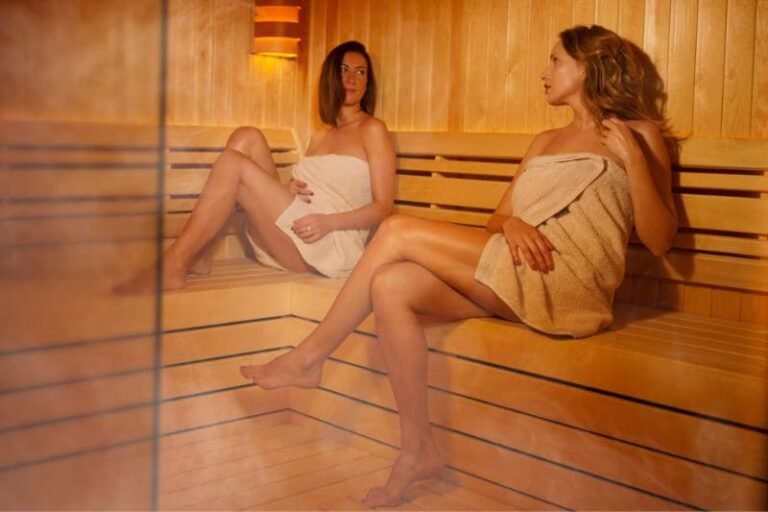
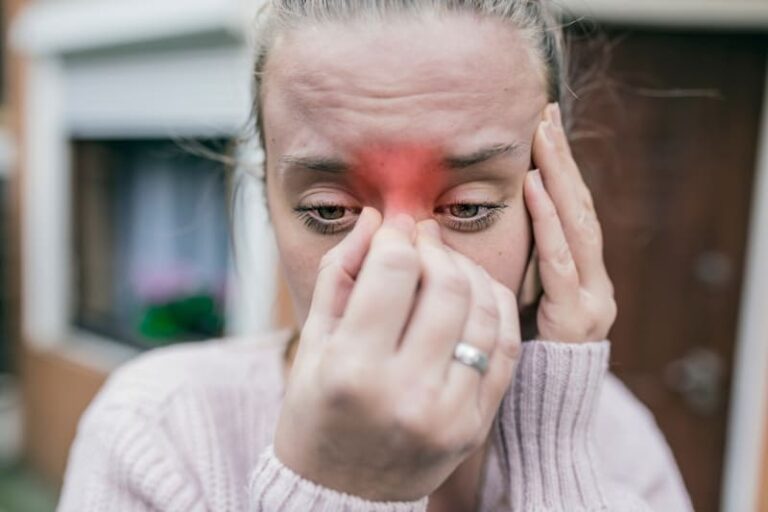
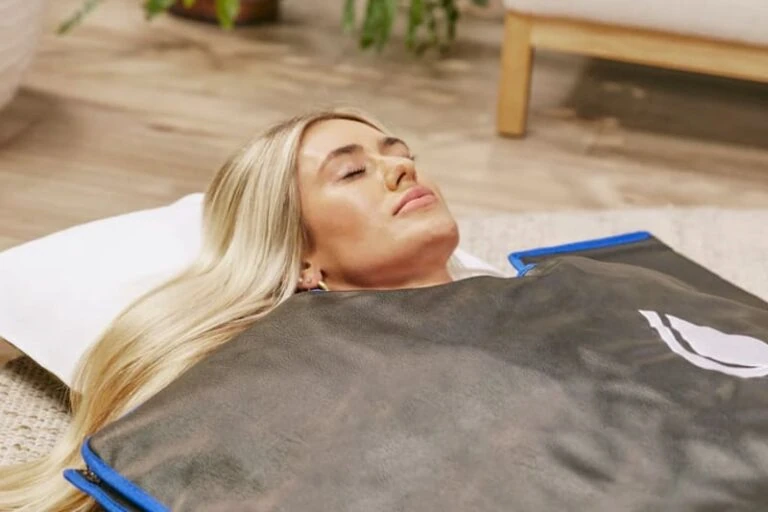
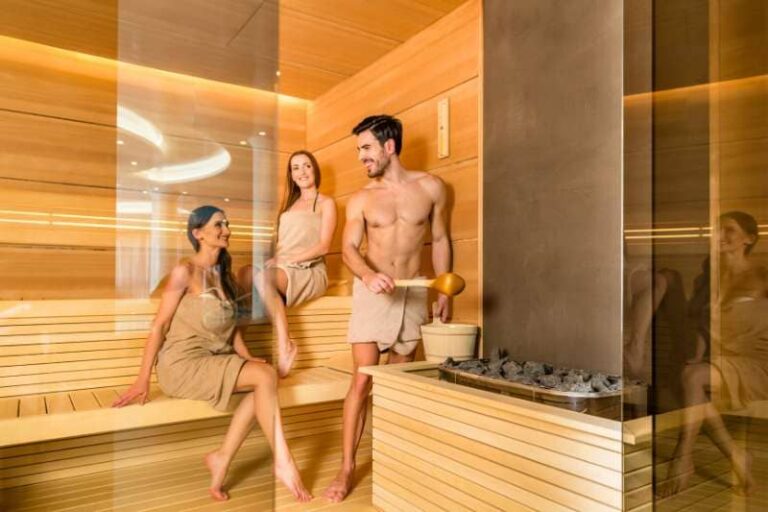
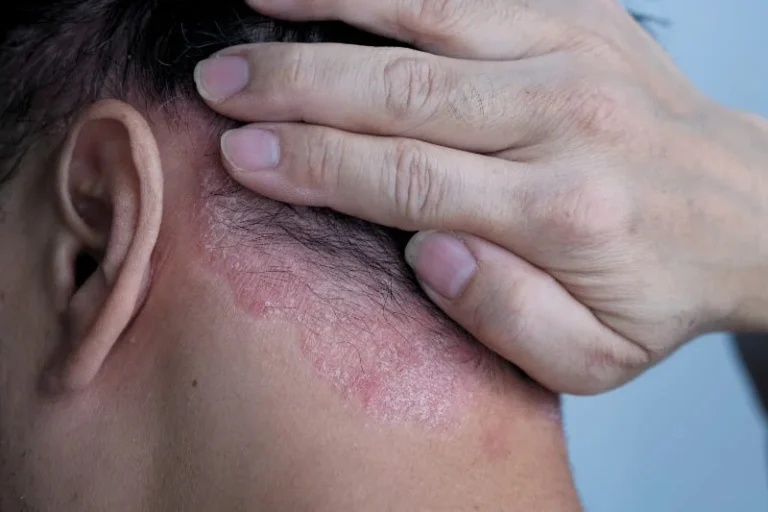

3 Comments